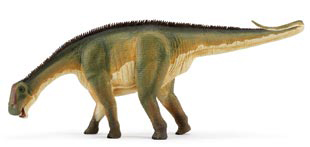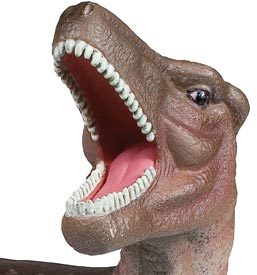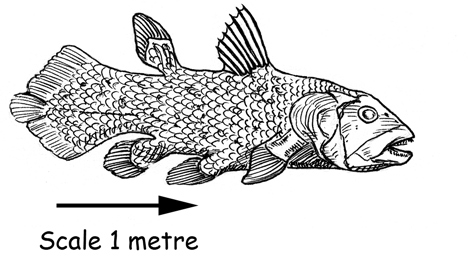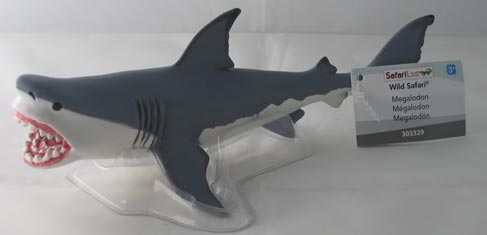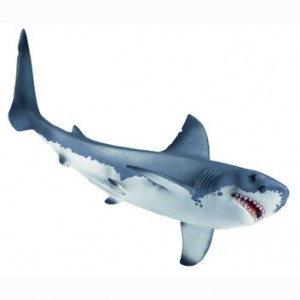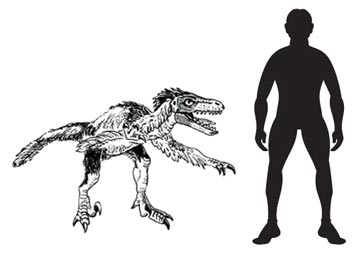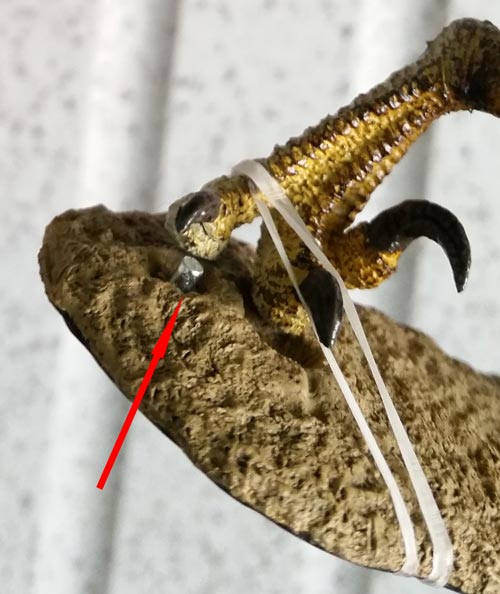Raptorex – A Tiny Dinosaur with a Big Future (Upsets the Tyrannosaur Applecart)
A largely accepted theory concerning the peculiar body shape of tyrannosaurs with their massive skulls, immense jaws yet puny arms is that something had to give at the front of the animal to counterbalance the weight of that near six-foot-long skull. So heavy was the head of a T. rex that gradually the arms got smaller and smaller as natural selection solved the problem of the need to lighten the rest of the front end of the animal to compensate for that increasingly massive, heavy head with its huge jaws.
However, the discovery of a 3-metre-long ancient ancestor of T. rex with the same body proportions has upset the scientist’s applecart. If tyrannosauroids gradually evolved smaller arms to counterbalance the weight of the increasingly massive skulls, then how come a 1 metre tall, 1/100th scale replica of Tyrannosaurus rex has the same tiny arms and body proportions as its descendant the fearsome T. rex?
The evolution of the tyrannosaur family is unclear, the fossil record being so poor, but the announcement of the discovery of Raptorex kriegsteini in the magazine “Science” and the papers written about this near complete fossilised skeleton shed new light on the origins of T. rex.
Raptorex
Raptorex has the same big jaws, “D-shaped” teeth, and powerful legs but weighed no more than about 10 stone (65kgs), compared to the 6,500kgs of an adult Tyrannosaurus rex. This Early Cretaceous specimen, believed to have been excavated in north-eastern China has been dated to approximately 125 million years ago (Barremian faunal stage). The fossil indicates that the tyrannosaur body type and proportions changed little over millions of years except in overall size.
An Illustration of a Typical Large Tyrannosaurus
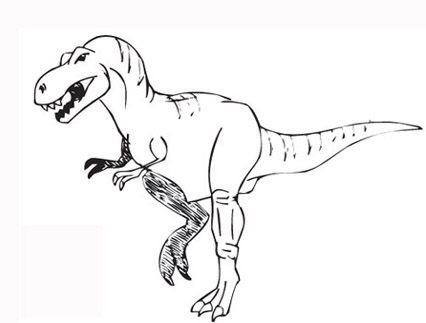
Picture credit: Everything Dinosaur
Tyrannosaurs
Over the last decade or so, a number of early tyrannosaur fossils have come to light. Most palaeontologists now believe that the later, larger tyrannosaurids migrated from northern Asia to the Americas in the Late Cretaceous at some time when land bridges existed between these two landmasses. Where tyrannosaurs originate from remains a mystery, with early tyrannosaur remains being found in places as far apart as China and the Isle of Wight.
Earlier discoveries such as the Isle of Wight Eotyrannus show that primitive tyrannosaurs were relatively small-bodied, fast running, long-armed dinosaurs. In fact Eotyrannus has one of the largest hands of any bipedal dinosaur in relation to the size of the rest of its body. These previous discoveries seemed to indicate that the big tyrannosaurs were descended from small-bodied, long-armed ancestors.
However, Raptorex kriegsteini looks identical to a big T. rex except that it is the best part of 100 times smaller. The research team led by the American, Professor Paul Sereno of the University of Chicago have studied the skull of this new meat-eating dinosaur and determined that the shape of the skull with its enlarged olfactory bulbs and big eyes indicate that Raptorex has an acute sense of smell and superb eyesight just like its giant descendant.
A Drawing of Eotyrannus lengi
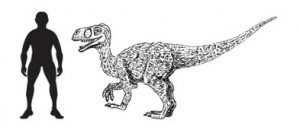
Eotyrannus illustrated.
Picture credit: Everything Dinosaur
Commentating on the new discovery, lead researcher Dr Paul Sereno, from the University of Chicago, stated:
“It’s as close to the proverbial missing link on a lineage as we might ever get for T. rex.”
He went onto add:
“From the teeth to the enlarged jaw muscles, the enlarged head, the small forelimbs, the lanky, running, long hind-limbs with the compressed foot for hunting prey: we see this all, to our great surprise, in an animal that is basically the body weight of a human or 1/90th the size that ultimately this lineage would reach in T. rex at the end of the Cretaceous”.
A New Dinosaur Discovery
The researchers believe that this new dinosaur discovery overturns accepted opinion on the evolution of tyrannosaurs. Until now it had been thought that their strange body shape evolved as a consequence of their large size. The fossil record bears out the previous theory that as tyrannosaurs developed truly giant size over time, they needed to modify their entire skeletons so they could continue to function as a predators as they grew.
Co-author Stephen Brusatte of the American Museum of Natural History (New York) is confident that Raptorex is going to overturn the evolutionary applecart when it comes to understanding the evolution of Tyrannosauroidae.
He stated:
“Here we have an animal that’s 1/90th or 1/100th of the size of T. rex, about my size, but with all the signature features – the big head, the strong muscles, the tiny little arms – that were thought to be necessary adaptations for a large body predator. So really we can say that these features did not evolve as a consequence of large body size but rather that they evolved as an efficient set of predatory weapons in an animal that was just 1/100th of the size of T. rex and that lived 60 million years before T. rex”.
Photographs show Dr. Paul Sereno adding the final pedal ungual to the reconstructed skeleton of R. kriegsteini. The pedal ungual is the hoof or claw bearing bone at the end of each toe.
The known fossil record indicates that tyrannosaurs only grew to huge sizes during the last twenty million years or so of the Cretaceous.
Dr Brusatte stated:
“So that means that for most of their evolutionary history, about 80% of the time that they were on Earth, tyrannosaurs were small animals that lived in the shadow of other types of very large dinosaur predators. In short, much of what we thought we knew about tyrannosaur evolution turns out to be either simplistic or out-and-out wrong”.
It is fascinating to speculate how the tyrannosaurs were able to become the apex predators in so many environments, gradually usurping other large theropods. The fossilised bones of Raptorex are believed to be from a young adult, perhaps no more than six or seven years old when it died. Although the fossils are associated with sandstone sediments laid down in a watercourse (lake bed), perhaps this early tyrannosaur hunted smaller dinosaurs, lizards and birds in wooded areas whilst trying to avoid the larger allosaur type predators such as the Sinraptoridae.
The researchers say that fragments of sand and sediment on the skeleton indicate that it came from an area of north-eastern China rich in fossils. It was dug up illicitly and spirited out of the country and ultimately sold.
The species name is named after Henry Kriegstein, a private collector, who bought it from a dealer. He contacted Dr Sereno in 2006 and asked him to analyse the specimen, and agreed to give it back to science. Mr Henry Kriegstein, has helped write the research paper and has generously agreed to return the fossil to China.
Update
Debate continues as to whether this is a new genus of primitive tyrannosaur from approximately 125 million years ago, or indeed a representative of a juvenile Tarbosaurus bataar dating from approximately 70 million years ago. The problem with this specimen is that there is not a lot of information concerning the location or indeed the geological formation from which the fossil was extracted. In June 2011, in the peer reviewed publication PLoS One, a team of scientists after reviewing the fossil evidence suggested that this was a specimen of a very young Tarbosaurus, perhaps only 36 months old.
If the fossil is proved to be from the Early Cretaceous Yixian Formation then this specimen would date from 125 million years ago and challenge the accepted view on tyrannosaur morphology. However, if after pollen analysis and other such tests to establish biostratigraphical relationships between this fossil matrix and other sediments then this fossil could represent a much more recent tyrannosaur, such as a juvenile Tarbosaurus.
Everything Dinosaur stocks a large range of model tyrannosaurs including the Papo model range. To view Papo prehistoric animal models: Papo Dinosaur Models.





